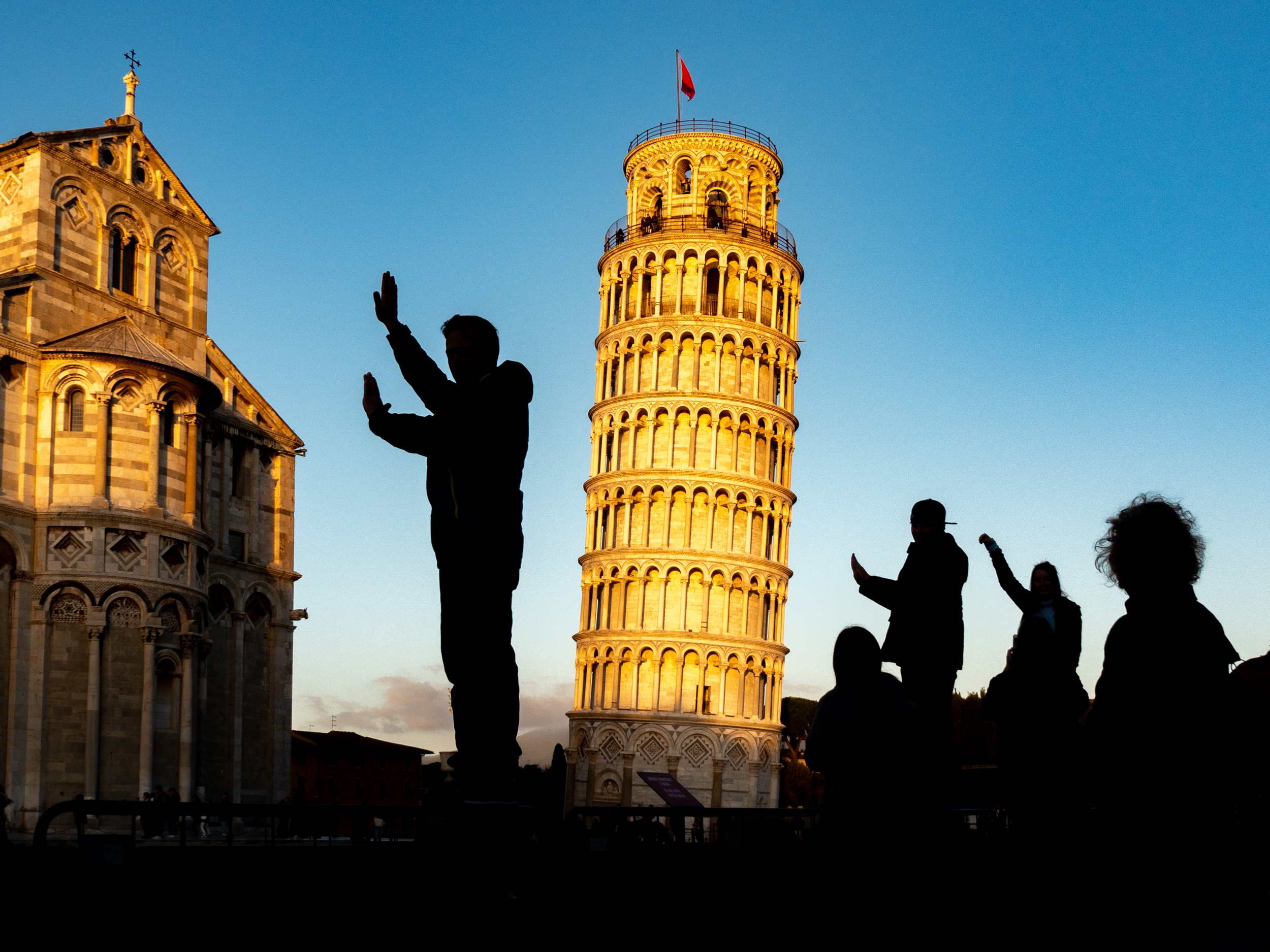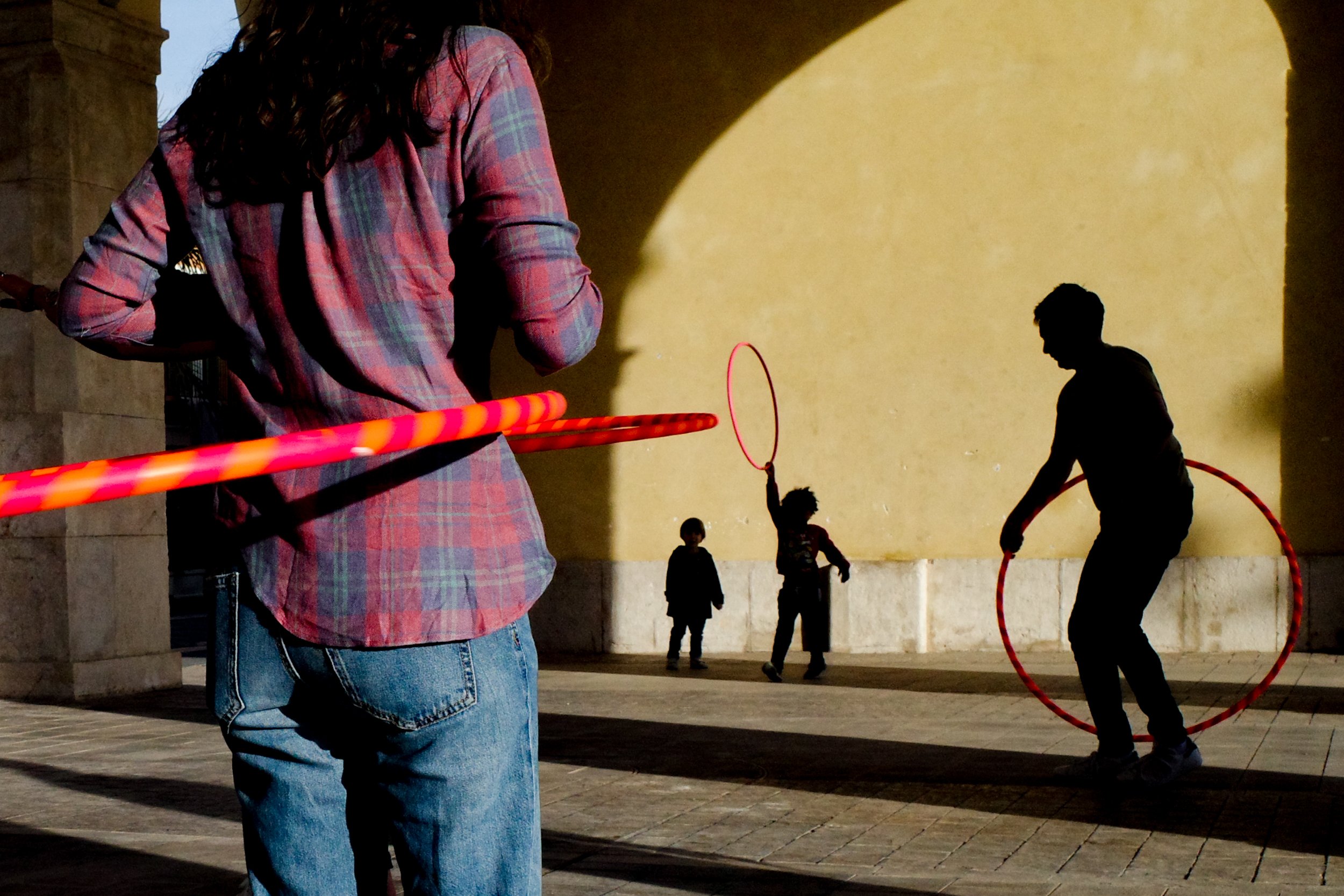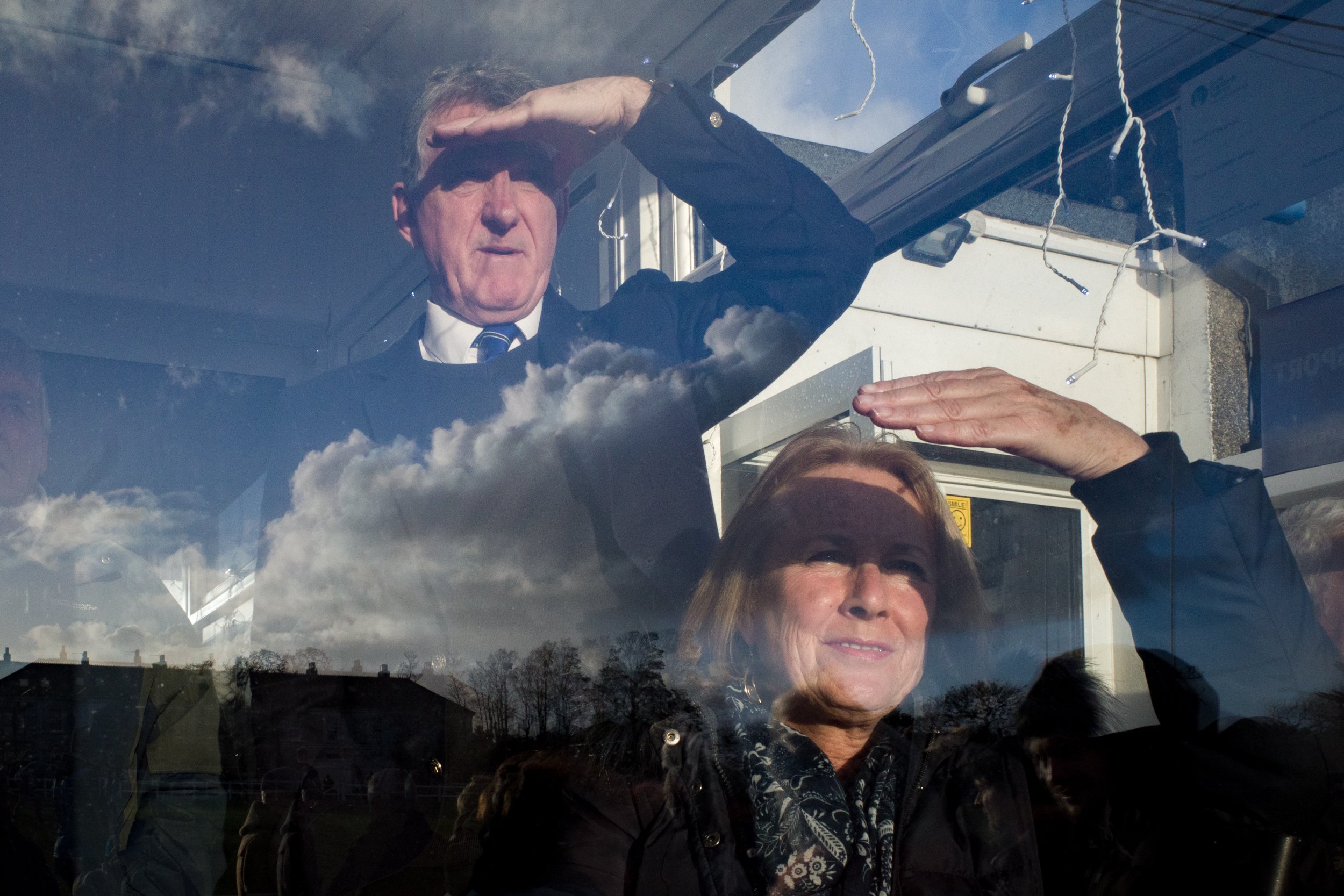Pia Parolin
‘The projects that really interest me are not “stolen” photos passing by, but happen in places where I come back over and over again, building up a real connection with the people’
Very proud to feature an interview with Pia Parolin, an Italo-German street and documentary photographer based in Nice and Hamburg.
She contacted me as she is member of Optic Nerve Collective together with Michael Goldrei (you can read his interview here). I discovered her work and I was really impressed by how she manages to combine colours, framing and patterns to make poetic and moving compositions.
For Travelling Light Club, she is sharing her photographic journey, what inspires her and the favourite photos in her portfolio.
Pia Parolin © All Rights Reserved.
Vincent Dupont-Blackshaw: How did you get into photography?
Pia Parolin: I was a lucky curious child with a dad who gave me my first camera and and showed me the wonder to discover the world through a viewfinder. And I got addicted and never quit. Not to make a living, but my camera was always with me. I used it for scientific and travel documentation. Since about 5 years, I concentrate on the artistic and conceptual visualization of things I feel concerned about.
V.D.B.: In a world where everyone is taking pictures all the time, do you remember the first time you felt like a photographer?
P.P.: I have always been a photographer because I always walked around with my camera, so friends and family wanted me to take photos whenever there was an event and declared me photographer when I still was a child.
Pia Parolin © All Rights Reserved.
V.D.B.: Is there a photographer whose work you particularly appreciate?
P.P.: I appreciate many famous and unknown photographers. At the moment, Alec Soth inspires me the most for my actual projects. His books are in my collection since long time, his more recent videos on YouTube are very inspiring too.
V.D.B.: Is there a photo of this particular photographer that you wish you had taken yourself?
P.P.: Some single photos by Alec Soth became iconic, i.g. ”Charles. Vasa, Minnesota, USA. 2002” from his series Sleeping by the Mississippi. I particularly appreciate Alec Soths whole series of “Sleeping by the Mississippi” (a book project). But also his street portraits with eye contact are amazing because of the expression of the people.
V.D.B.: Is your work influenced by other artworks or artists (painters, directors, musicians, writers, etc.)?
P.P.: Definitely, every single artist that touched my soul also influences the way I take photographs, the way I see the world. I would even expand the list to philosophers, thinkers, even psychologists. Photography is so much more than just pressing the button, it is about all I have seen and felt in my life. It all comes together and gives me new ideas.
Pia Parolin © All Rights Reserved.
V.D.B.: How do you define your work?
P.P.: I see myself as a social documentary photographer. I spend a lot of time with street photography which is fun, but for projects I am more interested in conceptual work. To find a theme and document it, stick to it, connect to the people involved and get into depth interests me more today. The projects that really interest me are not “stolen” photos passing by, but happen in places where I come back over and over again, building up a real connection with the people. Artistic and conceptual photography hold many views and answers and give me a way to convey my messages to the public, for example about nature conservation, the importance of water, about ruptures and resilience.
V.D.B.: What equipment do you use?
P.P.: I use several cameras, depending on the situation. I mostly use my Leica Q2 but when I travel to unsafe places (many tropical countries) I prefer my old Olympus or small Sony Cybershot, Ricoh GRii or cell phone.
V.D.B.: What are your three favourite photos in your portfolio?



V.D.B.: What do you want viewers to take away from your work?
P.P.: In my conceptual work it is the essence of my theme and the messages I want to convey through my photos. In street photography, it is beauty and the appreciation of a moment I managed to catch.
V.D.B.: What is the one thing you wish you knew when you started taking photos?
P.P.: When I started, I avoided to take photos of people, I waited for them to leave my frame. Too bad it took me decades to learn to approach unknown people on the street! I wish I knew how to approach a stranger on the street earlier in my life.
V.D.B.: Are you a frequent traveller?
P.P.: Oh yes, I travel all the time, whenever I can. I am aware of my CO2 footprint and try to keep it low but travelling is my happiness.
V.D.B.: Does travel play a role in your photographic practice?
P.P.: It did for 30 years. Today, my biggest challenge and fun is to photograph the things right in front of my house. All that is here is so obvious and boring, so the challenge is to find an interesting way of representing it.
V.D.B.: What is your favourite place in the world?
P.P.: Amazonia, the floodplains and the floating villages.
V.D.B.: Any idea of your next trip?
P.P.: Amazonia in Brazil for work and Perth in Australia to visit my daughter.
Pia Parolin © All Rights Reserved.
V.D.B.: What are you working on at the moment? What is your next project?
P.P.: I'm working on the theme of water and people. This brings my two professions together, biology and photography. As an ecologist specialised in freshwater ecosystems and the sustainable use of floodplains, I observe adaptation and change, overexploitation and resilience. As a photographer I analyse the (lost) connection between people and their rivers and point to ruptures and resilience.
I started conducting interviews, especially with women, and making photo reports that emphasize positive aspects and solutions.
The project continues to mature in my head, and I am happy about exchanges and cooperations.
V.D.B.: What else do you do besides photography?
P.P.: I am a book author (soft skills in photography, and ecological studies) and biologist (PhD in tropical ecology).
V.D.B.: Do you have a book, a film, a series, a music album, a work of art to recommend?
P.P.: The movies by the old authors (Robert Altman, Jim Jarmusch, Aki Kaurismaki) and their pictures in their movies.



